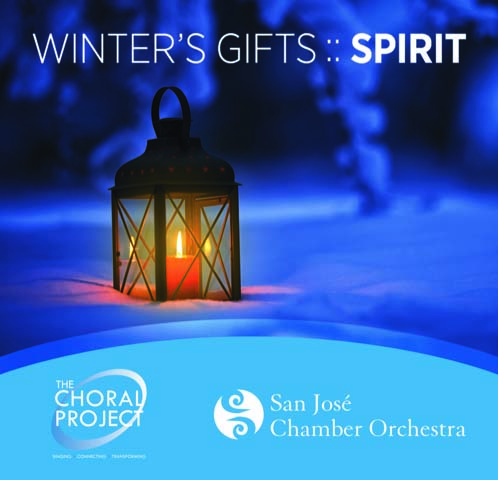
TAPESTRIES, AND TEMPLE-TO-TANGO TRANSITIONS
PALO ALTO, CA—A touring chorus and a homeless orchestra combined for a highly innovative holiday program that, I hope, will inspire others to broaden out beyond humdrum traditional-standards-and-sing-alongs Christmas formats.
What you had to like about the Choral Project is that it’s not one of the elite choruses vocally. Nonetheless it assembles stunning programs with varied forces leaving crowds talking animatedly well after the First United Methodist Church concert.
High point was what you might call a new “United-Nations cantata,” a testament to diversity and mutual tolerance. This was the world premiere of “The Tapestry of Life” by composer Daniel Hughes, 51, who is also the Project’s artistic director.
Hughes’ message was clearly reconciliation, addressing the sharp divisions between political parties, between ideologies, between religions, between even warring factions, under the rubric “Let the weaving of life bring you home.” He quotes some 20 languages from five continents, with the plea that we are all woven into the great tapestry of life. Musically, he adapts the tapestry idea with contrasting voices—one statis, the other overlaid and quite mobile (symbolizing warp and woof).
This was a gorgeous setting for his premiere, but it calls out loud and clear for a greater multitude (there were less than 500 at the premiere) attending in some major arts center. In our era of wild discord, the tapestry concept could be the symbolic logo for us all. And it merits airing in many venues, regardless of orientation.
With the choir of 50 and the much smaller San Jose Chamber (string) Orchestra—now close to a gypsy band, having lost its home base at San Jose’s Petit Trianon Theater—it all worked out, with added piano accompaniments. Hughes himself conducted, bringing a very modern program to a close.
The entire evening was a model of innovation; apart from an early Canadian Huron carol, nearly a dozen composers were featured, none born prior to 1927. These pieces too reflected contrasting cultures and religions with texts in English, Latin, Ladino, Hindi. The Jewish work in Ladino, Buen Shabbat, was disarming, leading off with a cantor’s chant and navigating to an infectious dance rhythm that had even singers smiling. Call it a temple-to-tango transition.
Contralto Malin Walrod gave her impressions of the late Jessye Norman’s immense voice in Donald Fraser’s “This Christmastide,” while other vocal soloists held forth in John Paynter’s arresting and complex piece full of crosscurrents and tone clusters, “The Rose.”
The 1642 Canadian Huron carol by the missionary Jean de Brébeuf was notable for adroitly adapting the Nativity story to the North American culture. The shepherds are now “hunters,” the manger is now a broken-bark lodge, and the swaddling clothes are now rabbit skin. Also the wise men now bring gifts of fox and beaver pelt. This was indeed fresh air, New World style.
Clearly, the Choral Project sets one of the gold standards for Bay Area choral activity, bringing off very difficult material quite presentably. If there was a flaw here, it was with various works run together without a clear-cut break to spell out individual creativity.
SJCO Director Barbara Day Turner led the earlier part of the program with secure baton.
“Winter’s Gifts,” concert collaboration of Choral Project and the San Jose Chamber Orchestra Dec. 21-22, initially at First United Methodist Church, Palo Alto. For further info, go online: www.choralproject.org or www.SJCO.org.